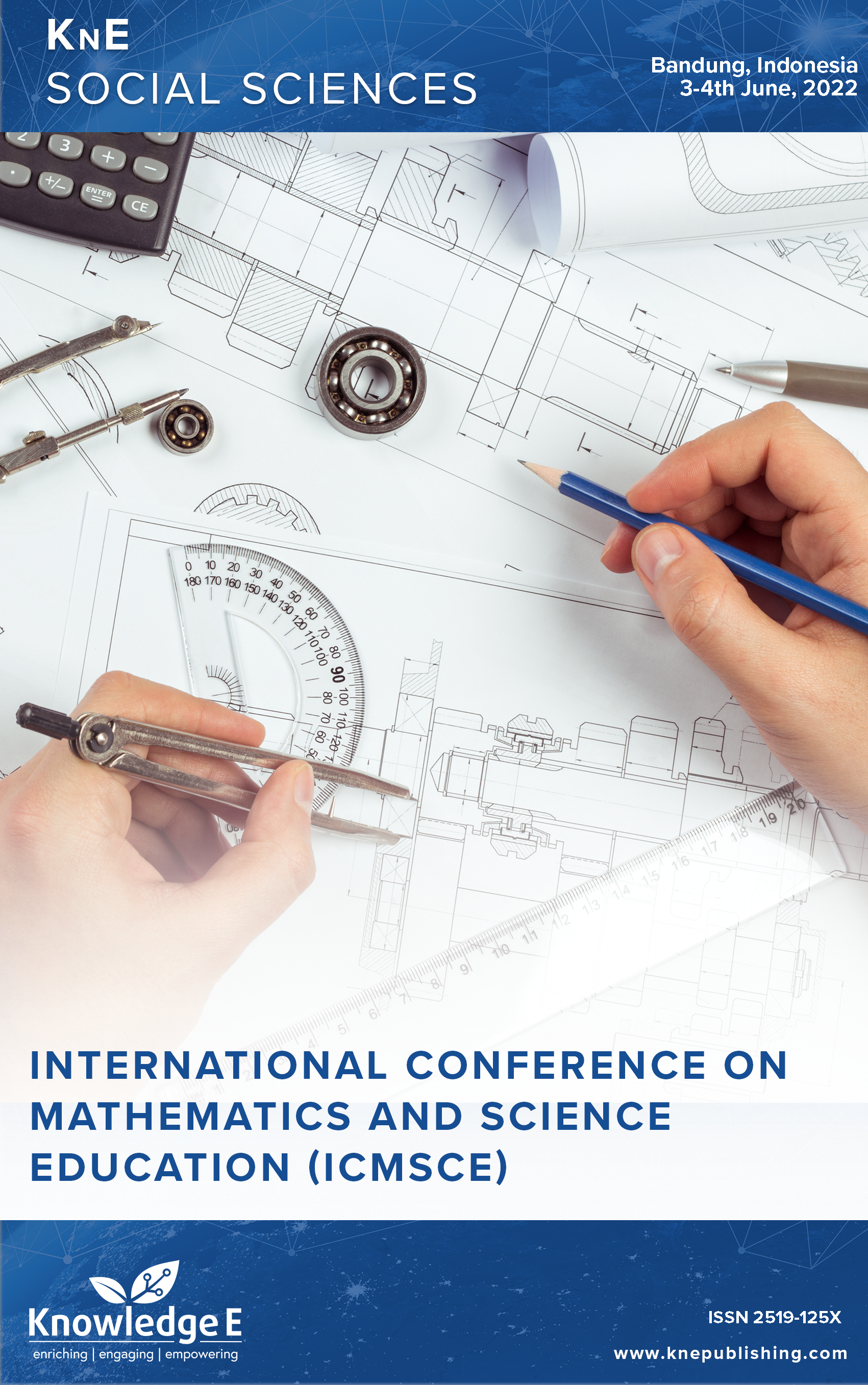Research on Ethnoscience in Science Education: An Analysis of the Literature
DOI:
https://doi.org/10.18502/kss.v9i13.16065Abstract
We examined 231 papers from the Scopus database that were written about ethnoscience in science education and were published between 1967 and 2023. This article aims to provide a comprehensive bibliometric evaluation of the ethnoscience literature in science education research. The characteristics of this study were organized, categorized, and visualized using VOSviewer software based on the study’s title, author, country of origin, and institutional affiliation of the author. Overall, this assessment provides a solid foundation for future studies on ethnoscience in science education research.
Keywords: Ethnoscience, science education, an analysis of the literature
References
George C. School science and ethnoscience. Journal of Science and Mathematics Education in South East Asia. 1991;14(2):27–36.
Moriolkosu AD, Handayani SS, Sunarso A. Ethnomathematics and ethnoscience analysis of Aru culture related to mathematics and science concepts at elementary school. Educational Management. 2020;9(2):163–71.
Suprapto N, Prahani BK, Cheng TH. Indonesian curriculum reform in policy and local wisdom: perspectives from science education. Jurnal Pendidikan IPA Indonesia. 2021;10(1):69–80. DOI: https://doi.org/10.15294/jpii.v10i1.28438
Spradley JP. “The ethnographic interview. New York: Holt, Rhinehart & Winston.,” LeCompte, MD (2000). Analyzing Qualitative Data. Theory Pract. 1979;39(3):146–56. DOI: https://doi.org/10.1207/s15430421tip3903_5
Putra HS. Ethnoscience a bridge to back to nature. E3S Web of Conferences. EDP Sciences; 2021. p. 01002. DOI: https://doi.org/10.1051/e3sconf/202124901002
Suprapto N, Prahani BK, Deta UA. “Research trend on ethnoscience through bibliometric analysis (2011-2020) and the contribution of Indonesia.,” p. 2021.
Ogawa M. “Science as the culture of scientist: how to cope with scientism?” In: preconference workshop of annual meeting of the National Association for Research in Science Teaching, Boston, MA (1999).
Snively G, Corsiglia J. Discovering indigenous science: implications for science education. Sci Educ. 2001;85(1):6–34. DOI: https://doi.org/10.1002/1098-237X(200101)85:1<6::AID-SCE3>3.3.CO;2-I
Sholahuddin A, Sya’ban MF, Fitriana R, Shalihah A, Misbah M. Wetland ethnoscience learning resources: an overview of physical science concepts. Berkala Ilmiah Pendidikan Fisika. 2022;10(2):153–62. DOI: https://doi.org/10.20527/bipf.v10i2.12698
Zidny R, Sjöström J, Eilks I. “Indigenous knowledge and science and technology education.,” in: contemporary issues in science and technology education. pp. 165– 179. Springer (2023). https://doi.org/10.1007/978-3-031-24259-5_12. DOI: https://doi.org/10.1007/978-3-031-24259-5_12
Wati E, Saregar A, Fasa MI, Aziz A. “Literature research: ethnoscience in science learning.,” In: Journal of Physics: Conference Series. pp. 012087. IOP Publishing (2021). https://doi.org/10.1088/1742-6596/1796/1/012087. DOI: https://doi.org/10.1088/1742-6596/1796/1/012087
Haq IU, Ahmed Z, Abbasi Y. The 100 most-cited articles in library philosophy and practice (e-journal): a bibliometric analysis. Library Philosophy and Practice; 2021. pp. 1–19.
Siwach AK, Kumar S. Bibliometric analysis of research publications of maharshi dayanand university (Rohtak) during 2000. DESIDOC J Libr Inf Technol. 2013;35(1):2015. DOI: https://doi.org/10.14429/djlit.35.1.7789
Liu X, Zhang J, Guo C. Full?text citation analysis: A new method to enhance scholarly networks. J Am Soc Inf Sci Technol. 2013;64(9):1852–63. DOI: https://doi.org/10.1002/asi.22883
Mongeon P, Paul-Hus A. The journal coverage of web of science and scopus: a comparative analysis. Scientometrics. 2016;106(1):213–28. DOI: https://doi.org/10.1007/s11192-015-1765-5
Van Eck N, Waltman L. “Software survey: VOSviewer, a computer program for bibliometric mapping.,” scientometrics. vol. 84, no. 2, pp. 523–538, 2010. DOI: https://doi.org/10.1007/s11192-009-0146-3
N.J. VanEck and L. Waltman, “VOSviewer manual,” (2022).
Leydesdorff L, Rafols I. Interactive overlays: A new method for generating global journal maps from Web-of-Science data. J Informetrics. 2012;6(2):318–32. DOI: https://doi.org/10.1016/j.joi.2011.11.003

